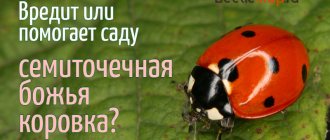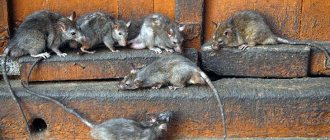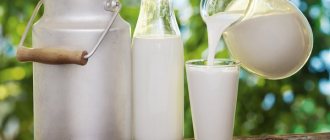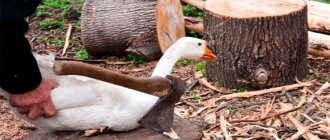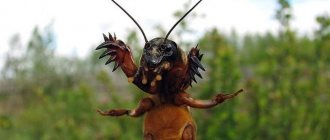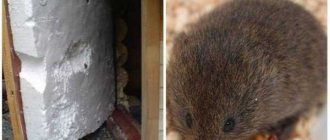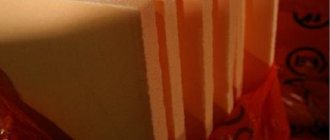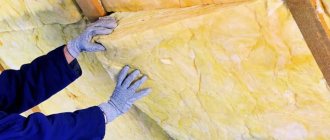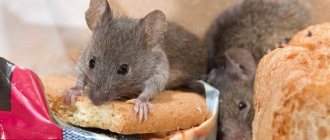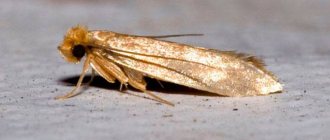Often after a cold winter, gardeners find chewed bark on apple trees, especially for young trees. Rodents may covet the bark, especially in a hungry year. If the damage is severe, the apple tree may even die. Therefore, you should know what to do if hares or mice have chewed on an apple tree and how to resist these pests.
An apple tree that was gnawed by hares.
Dangerous situation
In winter, rodents move to areas closer to people to find food. They become more active because it becomes cold in their natural habitats and there is a lack of food. Mice gnaw on the trunk, but most often damage only the bark; the trunk does not suffer much. But sometimes they undermine the roots of a plant, especially if they settle under it. Hares cause more damage and can chew through the cambium.
Trees usually recover on their own if only part of the bark is damaged. But severe damage to the tree is not able to heal. Damage to the cortex causes several problems:
- without external protection, the tree suffers from the cold;
- open wounds can contain harmful bacteria or fungal spores;
- If the cambium is damaged, the tree's nutritional procedure is disrupted.
In any case, you should not ignore apple trees that have been damaged by rodents. If a tree trunk is damaged around its circumference, the tree becomes very sick and may even die.
Which plants are most often damaged by rodents?
The orchard and favorite berry bushes are not the only plants that suffer from winter rodent activity. But they are the ones who most often become the object of attention of mice, hares and other garden guests who love to feast on the bark of plants.
Apricots and apple trees have always been special favorites of rodents, but even simple berry trees are often under threat in harsh winters. It is believed that hares with their strong paws, which make it possible to reach the branches, cause particular harm to the orchard. But both mice and rats are no less dangerous. They act more secretly, crawling under the snow to the roots and base of the trunk, literally gnawing trees and bushes. The activity of all rodents especially increases when other sources of food are depleted - at the end of winter and beginning of spring.
No matter how thorough the protection of the garden from rodents, it does not always cope with visitors looking for any available source of food. Constant inspections and strengthening of shelters may also not be enough.
If rodents have gnawed fruit trees and other plants, the first thing to do is not to panic and not to take “extreme” measures. Before getting rid of a seedling, it is worth assessing the damage, judiciously weighing the chances of success and, if the damage is not complete, trying to save the plant.
How to identify a pest
Many rodents don't mind eating tasty bark, especially in winter when food is running low. Apple trees are especially tasty for animals because they have fairly thin bark. They attack trees younger than 10 years old.
Mice invasion
Damage from a mouse infestation is usually the mildest. But this is if only one or a few pests are affected. Mice gnaw the outer layer of bark in a narrow ring. However, if the damage is very large, the apple tree may become sick.
The appearance of hares
Hares have stronger teeth and therefore damage tree bark more. They chew it off in pieces, leaving deeper wounds. In addition, they have a greater need for food, so the area of damage is much larger.
Water voles
The most dangerous pests are water voles. They harm plant roots by acting in the underground part of the tree. And the danger is that it is almost impossible to detect damage immediately. In case of severe damage, it will be necessary to graft the seedlings onto the tree and cut off part of the crown.
Restoring damaged roots
If mice and rats have gnawed through the roots of young plants under 5 years old, there is only one rescue strategy. This is careful treatment of wounds and slow recovery with balancing of roots and crowns, installation of supports and partial replacement of the substrate with special soil mixtures.
On plants with eaten roots (if no more than 80% of the roots are damaged), a complete root treatment procedure is carried out in the spring:
- dig out and rake away the soil, exposing the rhizome;
- all wounds, eaten and gnawed areas are treated with a solution of a fungicide, growth stimulator and thoroughly treated with ash;
- a reliable support is installed for the plant, which will serve as additional support for several years;
- add wood ash (2.5-3 l) and superphosphate (250-300 g) to the soil, fill the plant and carefully compact the soil, carefully filling the space between the roots;
- The crown is pruned, trying to leave as many branches as there are intact roots left (if 80% of the root system is damaged, cut out 80% of the branches, etc.). The root system and crown must be balanced; leave only strong, healthy skeletal shoots;
- For several winter seasons, the fruit tree is protected from rodents and frost more thoroughly.
Trees with damaged roots recover slowly, first growing rhizomes and then crowns.
Protecting apple trees from mice and hares
It is necessary to protect trees, especially young ones, rather than deal with the consequences later. There are some measures that will become an obstacle for rodents. It is better to carry them out comprehensively.
Sheltering the trunk of an apple tree from pest invasion.
First of all, it is necessary to clean the tree trunk area in the fall. All leaves, carrion and weed residues will need to be collected and burned. The clean trunk circle needs to be dug up, the trunk and skeletal branches must be whitened. If there is a compost heap on the site, it will need to be sealed.
Barrel cover
The easiest way to protect a trunk is to cover it. It’s better to wrap it, but hook the lower branches and deepen it a little. For covering, you can use fiberglass, burlap, mineral wool, spunbond or roofing felt. Then rodents will not be able to get to the trunk. But it is important to assemble the shelter at the very beginning of spring.
Obstacles
Mechanical barriers in the way of rodents will not allow them to get to young trees. Several types of material can be used:
- The chain-link mesh needs to be dug into the ground and installed around the trunk. It will be enough to make a shelter no more than a meter high, but the cells should be small;
- spruce branches can be tied tightly to the trunk. No pest will want to feast on thorns;
- use plastic bottles. The neck and bottom are cut off from them, and an incision is made on the side to put them on the tree. You can use tape to secure the bottles.
In these ways you can protect trees from the teeth of rodents.
I
Not the most humane way, but effective. However, pets may be harmed by poisonous baits, so you will need to be careful. To get rid of mice, the same products that help to clean them in the house are suitable. It could be:
- Ratobor;
- Rubigon;
- Storm;
- Goliath.
You can use any of their effective analogues. You just need to hide them from bad weather.
Unpleasant odors
The use of substances that emit unpleasant odors is a more humane method, but it also works. Hares and mice cannot tolerate the smell of cilantro, black root, and sunny. Herbs can be chopped and tied to the trunk or scattered near the roots. Dry substances can be placed in fabric bags or plastic bottles with holes.
Spraying
They will need to be repeated every month, but the remedy is effective. Emulsion paint, Bordeaux mixture or copper sulfate solution will help.
Spraying an apple tree against hares.
These drugs should only be used in protective suits, because the substances can harm people. The first treatment is carried out after the leaves have fallen and after the first frost. Then it is carried out every 30 days.
Noise repellers
Hares are quite shy, so any noise will be protection. The main thing for a repeller is to make enough noise. You can cut plastic bottles, aluminum cans, or simply stretch ribbons or garbage bags. The main task of such structures is to make as many sounds as possible.
There are special noise repellers that irritate mice. They are sold in special stores. If you place them on the site, then rodents will not be able to stay there.
conclusions
There are several methods for “treating” apple trees after mice have chewed the bark on them. The methods are quite effective, but still, after the tree has been damaged, its yield will be lower. Therefore, it is better to prevent a problem than to get rid of it later. Many different methods are used to protect apple trees from mice:
- Treating trees with iron sulfate or Bordeaux mixture.
- Sawdust soaked in Sanlizol scattered between apple trees.
- Treating the trunk with a mixture of naphthalene and fish oil.
- In winter, fallen snow near trees must be trampled down to prevent rodents from making moves.
- Protecting apple trees with spruce branches tied to their trunks.
- Installation of fine-mesh steel mesh fencing around trees.
How to save a gnawed apple tree
Even in winter, when the snow melts, you can inspect the trees to check their integrity. At this time, the gardener can protect the apple tree from frost. The barrel must be wrapped with film in several layers, and roofing material must be secured on top. This will help the young tree not to suffer from severe frosts.
If damage to the bark is discovered in the spring, then it is necessary to save the tree. First of all, you will need to remove the remaining debris from under the tree and clean the bark. Then you can use various means.
Clay mash
It is necessary to cover the damaged areas with a clay mash, lightly touching the living area of the bark. The lubrication area should be wrapped in cotton cloth and left for the whole summer. Over time, it will be noticeable that the tissue is spreading as new bark grows underneath it. The fabric you should choose is light, cotton.
Preparing mash is very simple. You need to take half a bucket of clay and fill it with water so that it covers the clay 2 cm above. You need to leave it like this for a couple of hours so that the clay is well soaked, stirring occasionally. When the lumps disperse, you can use it for its intended purpose.
Healing a wound on an apple tree with a clay mash.
Linden bark
Linden bark will be a good way to heal wounds from exposure to rodents. A special decoction is prepared, for which you will need to take 200 g of dry bark. It is crushed, cut into small pieces, poured with a liter of water and boiled for 40 minutes. The result is a rather thick mass that needs to be applied to the trunk and secured. This compress is left on the tree until August.
Bridge design
This method will be especially relevant if the damage area is large and circumferential. You can use young shoots, thin branches, even from other trees. The bridge is prepared like this:
- the tree trunk is cleaned and treated with copper sulfate;
- cut cuttings of the same size, cutting them at an acute angle along the edges;
- cuts are made on the bark at the top and bottom, into which the cuttings are placed;
- the place where the connection will be is covered with garden pitch, and the top is insulated with polyethylene.
The shoots will gradually grow to the bark, replacing the damaged parts. They will gradually become a full-fledged trunk.
Engraftment of the cortex
This method is a kind of patches on the bark. It is quite complex and requires preparation for execution, but it will help heal even quite large wounds. To engraft the bark, it is necessary to find a donor, a tree from which a section of the bark will be removed. The tree on which the patch will be placed must be cleaned, and the bark from the donor must be carefully removed with a sharp knife. The cut must be applied to the wounded tree so that its area is larger than the area of damage, and secured with electrical tape.
Cutting the trunk for reverse growth
This is a drastic method that is used in extreme situations, if the damage is very severe and there are no options. Above the lower bud, you need to completely cut down the trunk, and cover the stump with garden varnish. Young shoots will come from strong roots, from which you can choose one shoot to leave. Next year it will be grown as a new trunk.
Video
We invite you to watch a few more recommendations from experienced gardeners in the following videos:
Author: Bugaeva Alexandra
Found a mistake? Select the text with the mouse and click:
“Frost-resistant” varieties of garden strawberries (more often simply “strawberries”) need shelter just as much as ordinary varieties (especially in those regions where there are snowless winters or frosts alternating with thaws). All strawberries have superficial roots. This means that without shelter they freeze to death. Sellers’ assurances that strawberries are “frost-resistant,” “winter-hardy,” “tolerates frosts down to −35 ℃,” etc. are deception. Gardeners must remember that no one has yet managed to change the root system of strawberries.
One of the most convenient methods for preparing a harvest of vegetables, fruits and berries is freezing. Some believe that freezing causes the nutritional and health benefits of plant foods to be lost. As a result of the research, scientists have found that there is practically no decrease in nutritional value when frozen.
In Australia, scientists have begun experiments in cloning several varieties of grapes grown in cold regions. Climate warming, which is predicted for the next 50 years, will lead to their disappearance. Australian varieties have excellent characteristics for winemaking and are not susceptible to diseases common in Europe and America.
It is believed that some vegetables and fruits (cucumbers, stem celery, all varieties of cabbage, peppers, apples) have “negative calorie content,” that is, more calories are consumed during digestion than they contain. In fact, only 10-20% of the calories received from food are consumed in the digestive process.
Both humus and compost are rightfully the basis of organic farming. Their presence in the soil significantly increases the yield and improves the taste of vegetables and fruits. They are very similar in properties and appearance, but they should not be confused. Humus is rotted manure or bird droppings. Compost is rotted organic remains of various origins (spoiled food from the kitchen, tops, weeds, thin twigs). Humus is considered a higher quality fertilizer; compost is more accessible.
You need to collect medicinal flowers and inflorescences at the very beginning of the flowering period, when the content of nutrients in them is highest. Flowers are supposed to be picked by hand, tearing off the rough stalks. Dry the collected flowers and herbs, scattered in a thin layer, in a cool room at natural temperature without access to direct sunlight.
A new product from American developers is the Tertill robot, which weeds weeds in the garden. The device was invented under the leadership of John Downes (creator of the robot vacuum cleaner) and works autonomously in all weather conditions, moving over uneven surfaces on wheels. At the same time, it cuts off all plants below 3 cm with the built-in trimmer.
The homeland of pepper is America, but the main breeding work on developing sweet varieties was carried out, in particular, by Ferenc Horvath (Hungary) in the 20s. XX century in Europe, mainly in the Balkans. Pepper came to Russia from Bulgaria, which is why it received its usual name - “Bulgarian”.
Prevention measures
Gardeners cannot predict whether rodents will come to the site. All that is possible is to make their life on the site impossible. To do this you will need:
- remove the tree trunk in the fall so that nothing attracts rodents;
- burn organic waste;
- dig up the soil under the tree;
- carry out whitewashing in the fall.
A preventative measure in the fight against rodents is whitewashing the apple tree.
If you try to carry out all preventative measures in the fall and use tips on how to protect young apple trees, then you won’t have to treat them.
A tree that has damaged part of its bark needs special care. His immunity is weakened, so he will need protection from diseases and pests.
Photo of my garden - apple trees
Look what I recently saw on my apple trees, and I will notice after the snow melted, since the apple trees were quite well covered with snow, of which there was plenty this winter.
But in the following photographs, these are my favorite apple trees, unfortunately I don’t remember the variety, but they grow as big as a fist - big and sweet:
Characteristics of the apple bark beetle
The bark beetle, or sapwood beetle, is an insect about 4 millimeters in size. The body of the beetle is cylindrical, dark brown in color. The elytra are covered with punctate grooves and stiff hairs. The paws and antennae are dark brown.
The bark beetle spends the main part of its life in the thickness of wood, which makes the pest difficult to detect. The emergence of insects occurs in the spring, at the end of the flowering of apple trees. At this time, the beetles mate and settle in new places, infecting fruit trees. The female bark beetle lays eggs under the bark of an apple or pear tree, gnawing holes for numerous ovipositions.
At the same time, the female bark beetle brings in the mycelium of the fungus Monilia Candida, which also begins to occupy the tree.
The eggs soon hatch into whitish larvae with powerful mandibles. They feed on the tissues and juices of the tree, leaving branched passages in the thickness of the wood. In the spring of next year, the larvae pupate, during the flowering of the apple trees they turn into mature beetles and fly out.
Diseased, weakened, shaded trees often become victims of the pest. Both adult and young plantings suffer. Pests such as bark beetles, codling moths, flower beetles and aphids can settle not only on apple and pear trees, but also on stone fruits - cherries, cherries, and plums.
Tree treatment
As a rule, damage caused by hares appears at the height of the snow cover. Thus, young seedlings can be completely left without tops, and in older trees, the lower branches or bark of the trunk usually suffer. The process of treating a tree depends on the complexity of the damage. Superficial damage to the cortex is considered the easiest. In this case, the cambium remains alive - the layer located between the bark and the main wood, so healing is not difficult. If the bark is gnawed along the entire circumference of the trunk and to a considerable depth, there is a high risk of death of the tree. In this case, quick radical measures are necessary.
Reference. The cambium is responsible for the growth of bark and full sap flow of the plant. Damage to the thin cambium layer leads to the death of the tree.
Treatment of superficial single damage
Minor damage to the bark is recommended to be treated immediately after detection with a mixture of clay and cow manure or garden pitch. You can also use a ready-made antibacterial drug. After treatment, the trunk is wrapped in polyethylene or cling film to speed up the healing process and protect the tree from infection. It is recommended to apply roofing material over the film so that the healing bark is not damaged by direct sunlight. As summer approaches, the wound heals and the dead tissue falls off.
If, as a result of damage, the inner layer - the cambium - has dried out, healing will require more effort and time. The wound requires constant care until the edges of the damaged area are completely closed and a dense scar forms on the bark. The surface of the growing layer is periodically covered with scratches to stimulate the growth of new tissue and lubricated with garden varnish. This process can continue for 2–3 years.
In severe cases of damage to the bark of an apple tree by a hare, they resort to the use of drugs known as “artificial bark.” Artificial bark refers to a special mixture that accelerates regeneration processes during wound healing. The biologically active substances contained in the preparation stimulate the regenerative powers of the tree’s body. The resulting elastic film firmly adheres to the wood and adheres firmly to it, like real bark. In addition, this putty protects the treated areas from water ingress and drying out.
If wounds on the tree were noticed in winter, it is recommended to insulate the trunk with polyethylene or agrofibre. You can start treatment only after the onset of heat.
Applying bandages
Bandages help with minor damage to trunks. But here it is still very important to detect the problem in time; it is better if this is done before the bark dries. If damage to the cambium is noticed, then the dressings will be ineffective. They are applied only for minor damage.
There are several ways to apply bandages; here we present the options most used by gardeners.
- Take Heteroauxin ointment and apply it to the damaged area. This ointment is inexpensive and is sold in almost all specialized stores. Then garden varnish is applied to the wound, after which it is wrapped with a clean cloth. To prevent moisture from getting inside the bandage, it can be wrapped in polyethylene.
- To implement the next option, we will need dried linden blossom. It can be prepared in advance, or you can simply buy it at a pharmacy or gardening store. A decoction is made from dried linden blossom. To do this, take 200 grams of linden and boil it in a liter of water for half an hour. The resulting broth is cooled and filtered through a cloth or gauze folded several times. The decoction needs to be thoroughly soaked into the wounds that appear on the trunks after a rodent bite. Then the barrel is bandaged and wrapped with plastic film on top. The bandage can be left on for the entire summer season. It is removed only after the first frost occurs.
- Another way to save apple trees from rodent attacks is to use a clay mash. This is the most ancient way to save apple trees. So, take 6 parts clay and 4 parts cow dung. Mix all this, adding water to liquefy. There is no need to make the mass too liquid, it should be thick so that it adheres well to the trunks of apple trees. This mixture should be used to properly coat the wounds caused by rodents. The coating layer should be thick. After this, the wound is wrapped with gauze or cloth. By the way, for such windings you need to use only natural fabrics, remember this. A clay layer is applied on top of the fabric, and the tree is left in this form for the whole summer. You can even leave this bandage for the winter, because natural fabric and clay decompose well and do not leave constrictions on the trunk.
- Some gardeners prefer to treat wounds of apple trees with a special product called RanNet. This is a putty, and it promotes rapid and high-quality healing of wounds. It is made on a bacterial basis. It should be applied to the trunk using a brush. No additional processing is required after this, since this putty forms a crust that will not crack and will not allow moisture to pass through.
- Copper sulfate also promotes rapid and high-quality wound healing. For this purpose, a 3% solution is used. They need to thoroughly saturate the tree trunk at the wound site, after which a plastic film is placed on top. The bandage can remain on the tree all season and is removed only in the fall after the first frost.
Attention! If damage to the trunk was discovered in winter, then the wound must be insulated to prevent frostbite. Agrofibre, wrapped in polyethylene on top, is perfect for insulation.
Graft
If the apple tree has received significant damage from rodents, applying bandages will no longer help; in this case, bridge grafting can help. Of course, if the cambium is damaged, it will be more difficult to help the apple tree, but you still need to try. Here's how this vaccination is done:
- The wound should be thoroughly cleaned down to wood.
- The barrel is treated with 1% copper sulfate.
- Several shoots from last year are cut from the apple tree and cut so that their size exceeds the size of the wound by 5 cm.
- The resulting cuttings are pruned on both sides. The cutting angle must be sharp.
- The bark above and below the wound is cut in the shape of the letter “T”.
- The cuttings are inserted into the cuts.
To treat young apple trees, 2 shoots will be enough. For older people - at least 5. After this procedure, the treatment site is lubricated with varnish and a bandage of fabric and polyethylene is applied to it. The shoots inserted into the cuts will take root after some time and will serve as cambium. After a few years, the area will be leveled, and the cut shoots will completely grow together with the tree.
Why are chewing on the bark dangerous?
The bark protects the wood from loss of moisture and freezing in winter, and damage to its integrity means the loss of this protection. During the cold season, the bare part quickly dries out, freezes and cracks, which can lead to the death of the tree.
Even small wounds left by the teeth of mice and hares can lead to dire consequences, because... through them fungal infections and harmful insects penetrate under the bark. If no treatment is taken, then over time the fungus can spread to the cambium and crawl to the core - then it will be impossible to save the tree. Colonies of parasites “work” in much the same way.
And third (perhaps the most important thing): the bark, together with the cambium located under it, is a conductor of nutrients; juices move through it from the roots to the branches and back. A tree left without food will almost certainly die.
Wounds inflicted on the tree by dining guests vary in degree. Hares and small rodents can:
- partially gnaw off the bark on the trunk or skeletal branches;
- chew skeletal or small branches to the ground;
- remove the bark on the trunk with a wide (hares) or narrow (mice) ring;
- damage the roots or tissues of the root collar of the tree.
Depending on the extent of the damage, you will have to make a decision - to save the tree or get rid of it. It is believed that only those seedlings that have at least 20% of their bark and roots left can be cured. However, if 50% of the tissues are damaged or if the bark is damaged in a ring, the risk of plant death increases significantly.
